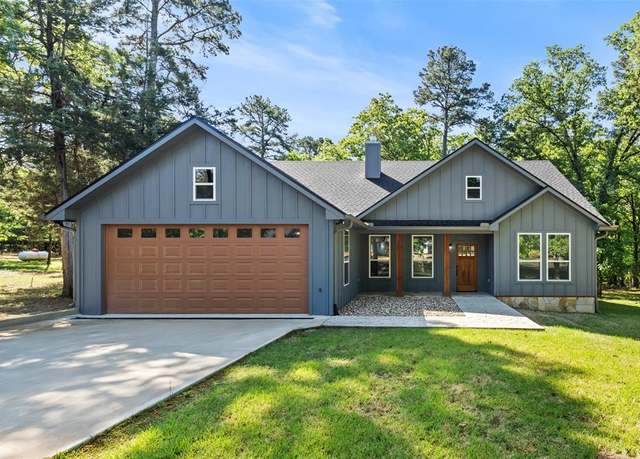When Mark and Jessica decided to sell their home, they were excited but nervous. They had lived in their suburban three-bedroom house for ten years, but it was time for a change. After watching home prices soar in their neighbourhood, they thought they were sitting on a goldmine. They assumed they could set a high price and watch the offers roll in. But after three months with no serious offers, they started to worry. A friend recommended a real estate agent who immediately pointed out the problem: their home was overpriced. They were too focused on emotional attachment rather than market realities. The agent conducted a Comparative Market Analysis (CMA), and they quickly adjusted the price. Within a few weeks, their home sold for just under the asking price.
Mark and Jessica’s experience highlights a common challenge for home sellers: pricing a home correctly. It’s easy to fall into the trap of assuming your home is worth more than it is—after all, you’ve invested years of memories and hard work into it. However, when it comes to selling, the market doesn’t account for emotional value; it only cares about one thing: comparable sales data. This is where a Comparative Market Analysis (CMA) becomes a crucial tool. In this article, we’ll explain what a CMA is, how it works, and why it’s essential for anyone buying or selling a home. We’ll also include expert insights and statistics to help illustrate the importance of accurate pricing.
What Is a Comparative Market Analysis (CMA)?
A Comparative Market Analysis (CMA) is a report prepared by real estate agents to help sellers determine a competitive price for their property. It analyzes the current real estate market by comparing the subject property (the home being sold) with recently sold homes, active listings, and homes listed but not sold in the same area.
The primary goal of a CMA is to provide a realistic estimate of a home’s value based on “comps” or comparable properties with similar size, location, features, and condition. CMAs are not the same as a formal home appraisal, but they are one of the most effective tools for setting a price to attract buyers while maximizing profit.
According to a survey by the National Association of Realtors (NAR), 89% of home sellers listed their property through a real estate agent, and one of the primary services provided was conducting a CMA (Source: NAR).
How Does a CMA Work?
A Comparative Market Analysis is more than just looking at a few homes for sale on Zillow or Redfin. It’s a comprehensive process involving analyzing multiple factors to estimate the home’s value accurately. Here’s how it typically works:
- Selecting Comparable Properties (Comps)
The first step in a CMA is finding comparable properties, or “comps.” These are homes that are similar to the property being sold in terms of:
- Location: The best comps are within a half-mile radius and in the same school district or neighbourhood.
- Size: Comps should have a similar square footage, typically within 10-20% of the subject property’s size.
- Age and Condition: Homes built around the same time and in similar conditions are considered better comps.
- Features: Amenities such as the number of bedrooms, bathrooms, garage space, or a pool are all considered.
For example, if Mark and Jessica’s home is a three-bedroom, two-bathroom house with 1,800 square feet built in 2005, the agent would look for similar homes that match those criteria.
- Analyzing Sold Homes
The most critical data in a CMA comes from recently sold homes. Why? Because these homes have already gone through the market and are buyers. A typical CMA focuses on properties sold in the past 3-6 months since the housing market can fluctuate rapidly. This helps set a realistic baseline for what buyers are willing to pay.
According to Zillow, homes sold for an average of 99% of the asking price in 2022, which shows how crucial it is to get the pricing right from the start (Source: Zillow).
- Evaluating Active and Pending Listings
While sold homes provide the most solid data, active listings and pending sales also play a role. Active listings show what other sellers in the area are asking for their homes, but it’s important to note that asking prices differ significantly from final sale prices. Pending sales give a sense of what’s currently under contract, but since the deal hasn’t closed yet, it’s less reliable than sold data.
- Factoring in Expired and Withdrawn Listings
Homes that were listed but never sold can also provide valuable insights. If several homes in the area were priced similarly but didn’t sell, it could indicate that the market won’t bear that price point. For example, a study by Redfin showed that homes priced too high initially are 50% more likely to stay on the market longer and sell for less (Source: Redfin).
- Adjusting for Unique Features
Not all homes are identical, even if they seem comparable. An excellent real estate agent will adjust the estimated price based on the home’s unique features, such as a finished basement, newly renovated kitchen, or energy-efficient upgrades. Likewise, homes needing repairs or with outdated features will be priced lower.
Why Is a CMA Important?
- Accurate Pricing
Pricing a home too high can scare off potential buyers, while pricing it too low could mean leaving money on the table. A 2023 NAR study found that homes priced correctly from the start sold 28% faster and 5% more than homes initially overpriced (Source: NAR). A well-executed CMA helps ensure the house is priced at the right level to attract offers while maximizing the seller’s return.
- Buyers Use CMAs Too
CMAs aren’t just for sellers—buyers use them to make informed offers. When making an offer, buyers (or their agents) will often run their own CMA to ensure they’re not overpaying. This is why sellers must base their asking price on realistic, data-driven estimates.
- Gaining an Edge in a Competitive Market
In a competitive market, a CMA can help a seller identify the perfect listing price that sparks interest and even bidding wars. A home might attract multiple offers if priced correctly, pushing the price above the asking price. Conversely, if the market is slow, a CMA can help the seller understand where to be more competitive to attract buyers.
Common Mistakes to Avoid When Pricing Your Home
While a CMA is a powerful tool, it could be better. Here are some common mistakes sellers make when pricing their homes:
- Ignoring Local Market Trends
Real estate is hyper-local, meaning trends in one city might not apply to another. Even in a town, neighbourhood-specific factors can significantly impact home values. Relying on national trends or the wrong comps can lead to overpricing or underpricing. According to CoreLogic, local market conditions, like job growth or school ratings, can outsize home prices (Source: CoreLogic).
- Pricing Based on Emotion
It’s easy to get emotionally attached to your home and feel like it’s worth more than it is. But emotional value doesn’t translate to market value. Relying on the data from a CMA helps keep emotions in check and ensures the price reflects what buyers are willing to pay.
- Assuming More Upgrades Equal More Value
While certain upgrades—like a modern kitchen or energy-efficient windows—can boost a home’s value, not all renovations offer a high return on investment. According to Remodeling Magazine’s 2023 Cost vs. Value Report, a midrange kitchen remodel recoups only 71% of its cost at resale (Source: Remodeling Magazine). A CMA will adjust for upgrades, but sellers shouldn’t assume that every improvement automatically increases the home’s market value.
Conclusion:
Is a CMA the Best Tool for Pricing Your Home?
A Comparative Market Analysis (CMA) is one of the most essential tools for determining the right price when selling a home. It provides a data-driven, objective estimate of what a home is worth based on the local market and comparable sales. While it’s not a formal appraisal, it offers valuable insights to help sellers avoid overpricing or underpricing their homes.
Just like Mark and Jessica learned, using a CMA helps sellers align their expectations with the realities of the market. By working with a knowledgeable real estate agent and leveraging a well-prepared CMA, sellers can price their homes correctly, attract serious buyers, and close deals faster. Understanding the power of a CMA is the key to success in real estate for anyone considering buying or selling a home.












 Afrikaans
Afrikaans Shqip
Shqip አማርኛ
አማርኛ العربية
العربية Հայերեն
Հայերեն Azərbaycan dili
Azərbaycan dili Euskara
Euskara Беларуская мова
Беларуская мова বাংলা
বাংলা Bosanski
Bosanski Български
Български Català
Català Cebuano
Cebuano Chichewa
Chichewa 简体中文
简体中文 繁體中文
繁體中文 Corsu
Corsu Hrvatski
Hrvatski Čeština
Čeština Dansk
Dansk Nederlands
Nederlands English
English Esperanto
Esperanto Eesti
Eesti Filipino
Filipino Suomi
Suomi Français
Français Frysk
Frysk Galego
Galego ქართული
ქართული Deutsch
Deutsch Ελληνικά
Ελληνικά ગુજરાતી
ગુજરાતી Kreyol ayisyen
Kreyol ayisyen Harshen Hausa
Harshen Hausa Ōlelo Hawaiʻi
Ōlelo Hawaiʻi עִבְרִית
עִבְרִית हिन्दी
हिन्दी Hmong
Hmong Magyar
Magyar Íslenska
Íslenska Igbo
Igbo Bahasa Indonesia
Bahasa Indonesia Gaeilge
Gaeilge Italiano
Italiano 日本語
日本語 Basa Jawa
Basa Jawa ಕನ್ನಡ
ಕನ್ನಡ Қазақ тілі
Қазақ тілі ភាសាខ្មែរ
ភាសាខ្មែរ 한국어
한국어 كوردی
كوردی Кыргызча
Кыргызча ພາສາລາວ
ພາສາລາວ Latin
Latin Latviešu valoda
Latviešu valoda Lietuvių kalba
Lietuvių kalba Lëtzebuergesch
Lëtzebuergesch Македонски јазик
Македонски јазик Malagasy
Malagasy Bahasa Melayu
Bahasa Melayu മലയാളം
മലയാളം Maltese
Maltese Te Reo Māori
Te Reo Māori मराठी
मराठी Монгол
Монгол ဗမာစာ
ဗမာစာ नेपाली
नेपाली Norsk bokmål
Norsk bokmål پښتو
پښتو فارسی
فارسی Polski
Polski Português
Português ਪੰਜਾਬੀ
ਪੰਜਾਬੀ Română
Română Русский
Русский Samoan
Samoan Gàidhlig
Gàidhlig Српски језик
Српски језик Sesotho
Sesotho Shona
Shona سنڌي
سنڌي සිංහල
සිංහල Slovenčina
Slovenčina Slovenščina
Slovenščina Afsoomaali
Afsoomaali Español
Español Basa Sunda
Basa Sunda Kiswahili
Kiswahili Svenska
Svenska Тоҷикӣ
Тоҷикӣ தமிழ்
தமிழ் తెలుగు
తెలుగు ไทย
ไทย Türkçe
Türkçe Українська
Українська اردو
اردو O‘zbekcha
O‘zbekcha Tiếng Việt
Tiếng Việt Cymraeg
Cymraeg isiXhosa
isiXhosa יידיש
יידיש Yorùbá
Yorùbá Zulu
Zulu